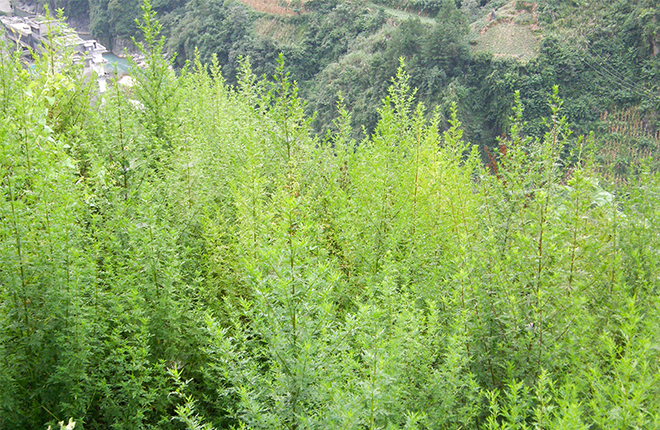Rising CO2 May Benefit Malaria Drug Supply
It is often said that when life gives you lemons, make lemonade.
The documented rise in global atmospheric carbon dioxide is affecting climate, with negative consequences for agriculture. But that increase in carbon dioxide could also have a positive effect on the concentration of some plant chemicals used for fighting disease.
Agricultural Research Service scientists and their colleagues have found that global increases in atmospheric carbon dioxide have affected the plant Artemisia annua, a common roadside weed in the United States and the source of artemesinin, a compound that is used in drugs to treat malaria throughout the world.
Malaria is a mosquito-borne infection that affects humans and other animals. The disease is widespread in the tropical and subtropical regions, especially sub-Saharan Africa, where it results in the death of half a million children each year.
Extensive scientific research documents the role of rising atmospheric carbon dioxide levels on plant growth, but research on the effect of carbon dioxide on secondary plant compounds is limited. Some of those plant compounds can play a significant role in human health.
ARS plant physiologist Lewis Ziska at the Crop Systems and Global Change Research Laboratory in Beltsville, Maryland, was involved in research to determine the effect of increased carbon dioxide levels on A. annua. This research was reported in 2015 in the journal Climatic Change and included historical analysis of leaves collected for over a century, as well as new experimental data.
“Both the historical and experimental data indicate that increases in the concentration of foliar artemesinin are likely to continue in parallel with the ongoing increase of atmospheric carbon dioxide,” says Ziska.
The researchers then turned to current and future artemesinin concentrations. “We grew and analyzed wild and cultivated populations of A. annua at ambient and projected midcentury (2060) concentrations of atmospheric carbon dioxide using free-air carbon dioxide enrichment methods,” says Ziska. “To confirm and then expand on these experimental data, we also used a historical approach. We assessed herbarium samples from 236 locations in mainland China from within a 100-year timeframe [1905-2009] to quantify the relationship between recent increases in carbon dioxide and artemesinin concentrations in A. annua during the 20th century.
“Overall, these data provide the first evidence that historic and projected increases in atmospheric carbon dioxide may be associated with global changes of artemesinin chemistry, potentially making a greater quantity of drug available for the same area of cultivation.”—By Sharon Durham, Agricultural Research Service Information Staff.
“Rising CO2 May Benefit Malaria Drug Supply” was published in the September 2015 issue of AgResearch Magazine.
Key Facts
- Artemesinin is a compound used to treat malaria.
- It comes from the plant Artemisia annua.
- Rising atmospheric carbon dioxide levels increase artemesinin levels in the plant’s leaves.
- This could mean that more of the malaria drug could be produced without growing more plants.
Full Story








